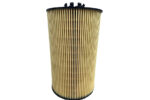Semi-trailer head aerodynamics: increasing fuel efficiency and reducing emissions

In the trucking industry, fuel efficiency isn’t just about saving money; It is also an important factor in reducing the environmental impact of transport. One area that is often overlooked and has considerable potential for improvement is the aerodynamics of the semi-truck head. This article explores how the aerodynamic design of semi-trailer heads can improve fuel efficiency and reduce emissions, offering a look at the impact of aerodynamics, design features that make a difference, and real-world applications and future trends in this field.
The Impact of Aerodynamics on Fuel Efficiency
Aerodynamics play a crucial role in determining the fuel efficiency of semi-trucks. As a vehicle moves, it pushes in the air and the smoother this interaction is, the less drag it experiences. Reduced drag means that less engine power is needed to maintain speed, which translates into lower fuel consumption. For semi-trucks, which spend a significant amount of time on the road, even small improvements in aerodynamics can lead to substantial savings in fuel costs and emissions over time. The impact is magnified by the weight and size of the loads they carry, making aerodynamic optimization a critical aspect of sustainable road transport.
Design features of semi-trailer heads for improved aerodynamics
Various design features can be incorporated into the heads of semi-trailers to improve their aerodynamics. Aerodynamic shapes that reduce air resistance are essential, as is the use of fairings and extensions that guide airflow around the trailer more smoothly. Roofline fairings, side skirts, and rear diffusers can help minimize turbulence and drag. In addition, the placement and design of lights, doors, and other bumps can favor or hinder airflow. Modern designs also consider the integration of the semi-trailer head with the tractor unit, creating a unified airfoil that works in tandem to reduce overall drag.
Real-world applications and future trends in aerodynamic design of semi-trailer heads
In the real world, the adoption of aerodynamic semi-trailer head designs has led to demonstrable improvements in fuel efficiency and reduced emissions. Many fleet operators have reported significant savings after retrofitting their trailers with aerodynamic improvements. Looking ahead, we can expect to see more innovation in this area. Advances in materials science can lead to lighter and more efficient aerodynamic components. Computational fluid dynamics (CFD) and wind tunnel testing will continue to refine the designs, optimizing airflow around the semi-trailer head. In addition, the rise of electric and alternative fuel vehicles may introduce new considerations for aerodynamics, as the physical design and requirements of these vehicles differ from traditional diesel-powered trucks.
Conclusion
The aerodynamics of semi-trailer heads are a critical component for fuel efficiency and emission reduction in the trucking industry. By understanding the impact of aerodynamics and incorporating smart design features, fleet manufacturers and operators can make significant progress toward more sustainable operations. As technology and materials continue to evolve, the future of aerodynamic semi-truck head design looks promising, with potential for even greater improvements in efficiency and environmental performance. The way forward for semi-truck aerodynamics is one of innovation and progress, propelling the industry towards a greener horizon.







